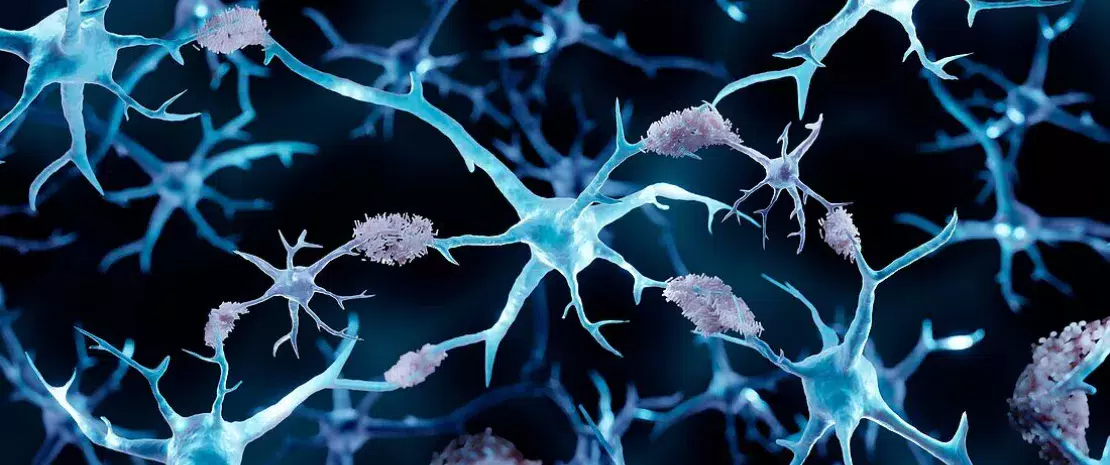Gut microbiota: an early indicator of Alzheimer’s disease?
Before even the slightest clinical sign of Alzheimer’s disease appears, future sufferers see a change in their gut microbiota. These changes may help identify patients at the pre-clinical stage.
Sources
This article is based on scientific information

About this article
Previous studies have highlighted dysbiosis in the gut microbiota of patients showing symptoms of Alzheimer’s disease. But what about before the first symptoms appear? A team from the University of Washington School of Medicine in the US examined this question by analyzing the microbiota of 164 people aged between 68 and 94 who had no cognitive impairment, but 49 of whom showed (sidenote: Biomarkers Pathogenic β-amyloid (Aβ) and tau proteins measured via positron emission tomography (PET) or by levels in cerebrospinal fluid (CSF), markers of neurodegeneration (temporo-parietal hypometabolism, hippocampal atrophy, etc.) identified via CSF and magnetic resonance imaging (MRI). ) . The results were unequivocal: the gut microbial taxonomic profiles of the 49 “pre-patients” differed from those of the 115 controls.
55 million More than 55 million people worldwide suffer from dementia.
60% to 70% 60% to 70% of dementia cases are caused by Alzheimer’s disease.
(sidenote: OMS https://www.who.int/fr/news-room/fact-sheets/detail/dementia )
A gut microbiota specific to pre-clinical stages
This dysbiosis correlates with markers of pre-clinical stages of the disease, notably the deposition of β-amyloid plaques in the brain. However, it is not linked to biomarkers of neurodegeneration (temporo-parietal hypometabolism, hippocampal atrophy, etc.). Thus, the gut microbiota seems to change from a very early, asymptomatic stage of the disease.
More specifically, the content of certain bacteria either increases or decreases, including Dorea formicigenerans, which has pro-inflammatory properties, Oscillibacter sp. 57_2, which may be associated with reduced epithelial integrity, anti-inflammatory Faecalibacterium prausnitzii, and to a lesser extent, Coprococcus catus, Anaerostipes hadrus, Methanosphaera stadtmanae, and Ruminococcus lactaris. Some of these gut bacteria may therefore be involved in the causal chain, although further experiments are required to confirm any such causal link and rule out a simple co-occurrence.
10 years An interval of at least 10 years exists between the first deposition of Aβ plaques in the brain and the first clinical signs of impairment.
Simplifying and improving identification of at-risk patients
In any case, this bacterial signature may help improve disease prediction. This is based on a test carried out on a sub-group of 65 patients, where the addition of these bacterial taxa improved the accuracy of predictive models. This improvement is slight (sensitivity +1.5%, specificity +5.0%) when the initial model includes the β-amyloid protein, the main pre-clinical signature of the disease. However, the latter requires complex tests. When models are based solely on readily available data (demographics, clinical covariates, and genetics), the addition of taxonomic characteristics, which require only a stool sample, improves sensitivity by 6.8% and specificity by 27.1%. This makes it easier to pre-identify at-risk patients, who can then be prescribed more in-depth examinations (lumbar puncture and neuroimaging). Lastly, the study could open the door to interventions on the microbiota aimed at limiting the progression of Alzheimer’s disease towards clinical stages.









